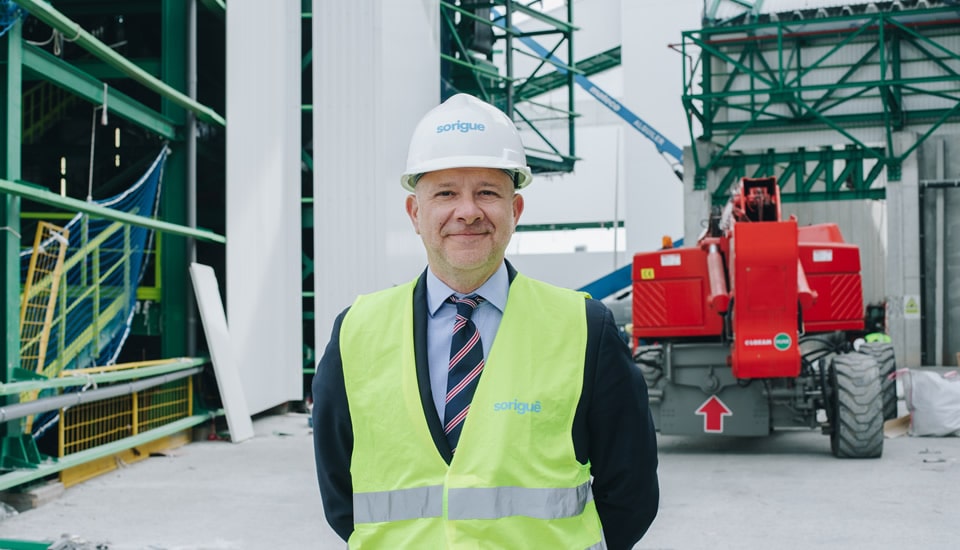Technology and innovation are very important and relevant to Sorigué’s mission. How are they related and applied in a sector such as construction that seems to have used very similar practices and rules for centuries?
I think that it’s been in the last few years that the construction sector has been undergoing a very important evolution, which is perhaps not overtly evident. We are also experiencing this evolution at Sorigué. The industry is taking a decisive approach to digitalisation and innovation, which are indispensable springboards leading to greater productivity and flexibility. We have been observing this in all the players involved in the world of construction.
As part of our current Strategic Plan at Sorigué, we are putting a great deal of effort and resources into digitalising our processes, integrating new innovative technologies which, at the same time, are sustainable in our environment. At the heart of our plan is responsible business, people and the commitment to give back to society, which has characterised us since our inception. This is a specific commitment made by our business group.
In general, how has construction evolved in recent years?
Particularly after the economic crisis, the construction industry has become more resilient and more aware of its responsibility. This has forced us to approach our projects with a broader perspective.
The industry has started a shift towards the implementation of technological solutions focused on improving processes, resource planning and improved execution efficiency, all through BIM environments, cloud systems, CRM environments and data analysis.
We can also observe a change in building approaches; there is a greater awareness of the full project cycle and its impact both on the part of constructors and clients.
There are various professions involved in large and complex works and which are diverse in nature. How do they communicate and relate to one other? Have new professions appeared?
With regards to the sector’s professional profiles involved in the execution of major works, a transformation is taking place towards a matrix system and the provision of services, according to the different phases of the execution of the project itself. In this regard, the professionals involved start with a focus which is more associated with a specific project.
The traditional professions associated with major projects, such as Civil Engineering, Architecture, Technical Architecture, Industrial Engineering, intermingle with new professions coming from those holding Degrees in Environmental Sciences, Chemistry, Economics, Law or more technological roles such as BIM managers or Facility Managers, focused on the operation and/or future maintenance of the infrastructure. All this provides a reality of more intertwined and complex professional interrelationships due to the innumerable variables participating in these large projects.
The projects in which the company is involved are almost always large, sometimes enormous, and even colossal. It would be very interesting to understand how sustainability criteria can be applied in these areas.
As I mentioned earlier, the commitment to sustainability forms part of Sorigué’s current Strategic Plan and is therefore integrated into all our actions, including the construction of large infrastructures. The sector is not oblivious to the new demands made by society which also affect the demands of our customers. We apply new techniques that seek to reuse, to recycle, to achieve energy efficiency, and resilience in buildings and civil engineering infrastructure.
On the other hand, as a company we are committed to the circular economy and we constantly invest in new innovation and sustainability projects that improve our processes and services. We research new materials and techniques that show greater respect in caring for the environment and we implement more efficient management systems.
At Sorigué we are used to building under the umbrella of LEED, BREEAM type certificates, with the aim of rating and verifying aspects of environmental sustainability and energy efficiency in our constructions.
In parallel, in 2019, for example, we expanded our fleet of electric and gas-powered vehicles, and we built new facilities in Barcelona and L’Hospitalet de Llobregat complying with the highest parameters of energy efficiency and environmental sustainability, in addition to our efficient headquarters in Madrid and Tarragona.
Among Sorigué’s values, the “commitment to giving back to society” stands out. Could you explain some examples of this focus? Are the activities of the Sorigué Foundation part of this policy? How do art and technology coexist?
Since its origins more than six decades ago, the commitment to give back to society has been part of the DNA of the Sorigué business group. The Sorigué Foundation promotes this commitment through activities in social, educational and cultural fields. In addition, the foundation has a collection of contemporary art considered to be one of the most important in Spain and it organises temporary exhibitions with a clear educational and informative mission.
This commitment is also embodied in PLANTA, an innovative project that unites the world of business and the foundation, and that brings together Sorigué’s commitment to innovation and business knowledge with a very creative vision through art.
Similarly, as reflected in our 2020 Strategic Plan, responsible growth is at the core of our business, and therefore the commitment to our environment is also materialised in each of our activities.


